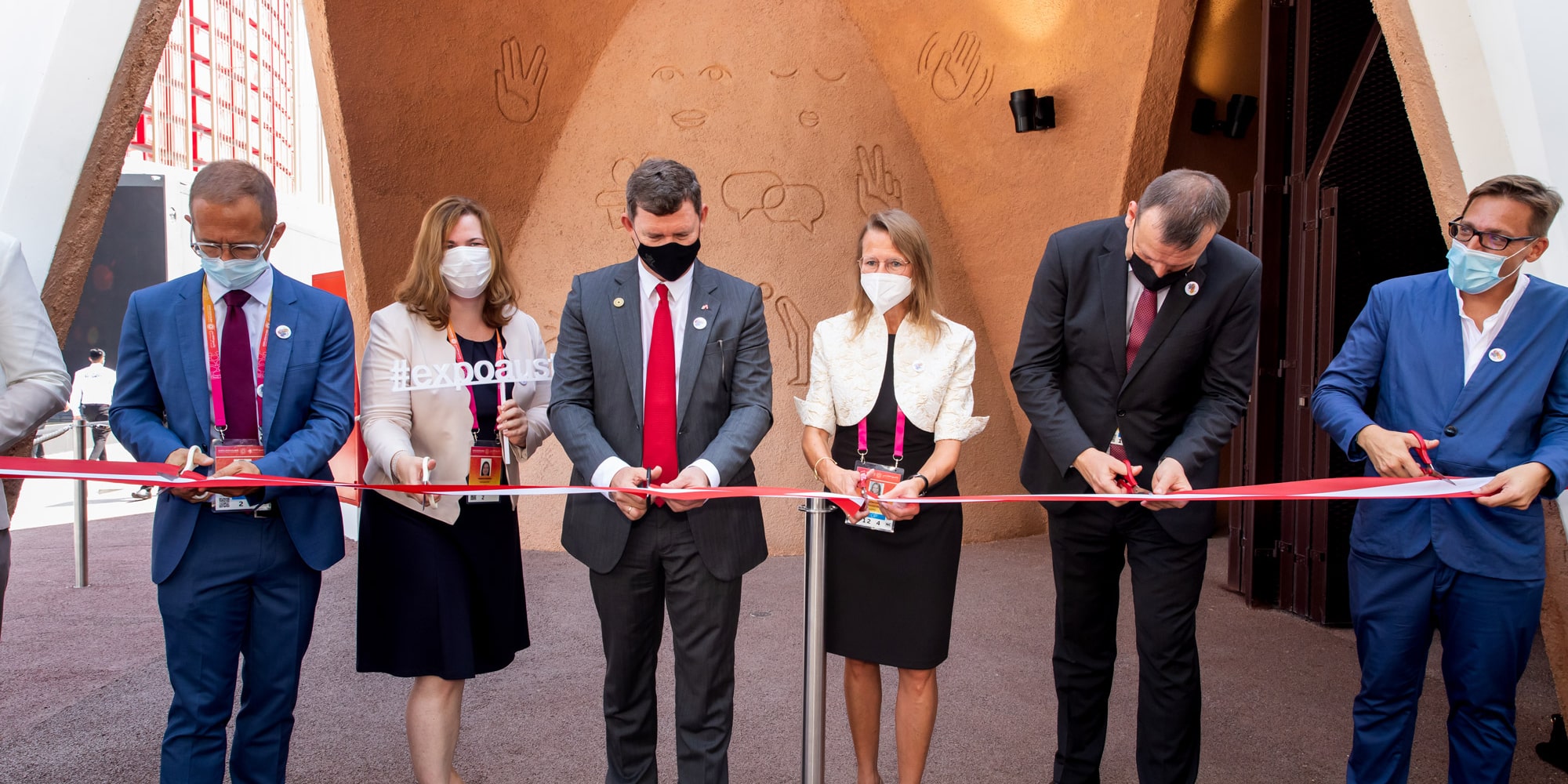The festival is barely over, the last artworks on their way back to their homes or new destinations, and in October 2021 we’re already in the midst of new projects. We look back at a residency with a focus on Southeastern Europe, back at the past of Ars Electronica, and forward to the future of medicine and to Dubai, where the Austria Pavilion at the EXPO will finally open a year late with a decisive design contribution from Linz.
A look back…
But first, we’d like to introduce you to our “Throwback” series, which we’ve been running weekly on Thursdays on the blog and on social media to look back at past events, exhibitions, installations and other exciting happenings from the Ars Electronica universe since 1979.

Let’s continue with a review of the first year of the ArtScience Residency, which was made possible by the Art Collection Deutsche Telekom. The residency was dedicated to artists from Southeastern Europe who work at the interface of art/science/technology and are interested in the social impact of technological developments. A scientific partner was found in JKU, Johannes Kepler University in Linz and in particular Martina Mara’s Robopsychology Lab. After the Open Call and an extensive discussion among the jury members, Kyriaki Goni became the first artist to be funded under this partnership.
The online exchange between artist Kyriaki Goni and scientist Martina Mara began in February and was followed by a research and production phase. During this phase, Kyriaki worked on her work, titled Not Allowed for Algorithmic Audience, which was shown for the first time at the Ars Electronica Festival in September 2021. The following short documentary shows the form the artwork took:
The Futurelab also flips through the album of pictures, videos and memories of this year’s anniversary year, which was also celebrated extensively during the festival. A written summary can be found here.
…and ahead
So, enough with reviews, now we are back to October and current events. The first World Expo in an Arab country will begin in October 2021, with three pavilions representing sustainability, mobility and opportunity on 438 hectares between Dubai and Abu Dhabi. Among the 192 participating nations, Austria is also represented with the motto “Austria Makes Sense”. Together with querkraft, bleed and büro wien, Ars Electronica Solutions was responsible for the conception of the event spaces and developed and realized all media installations in the pavilion.





The pavilion is dedicated to the themes of climate change, renewable energies, resource conservation and digitalization. The architecture itself and the interior design make reference to the theme of sustainability by using a sustainable ventilation system and clay cladding to cool the building. In this forward-thinking combination of architectural tradition, modern building concepts, and the latest technology, media art installations communicate with the atmosphere of the interior to challenge and enliven all human senses and reshape the way we think about sustainability and sustainable innovation. This project was funded and commissioned by the Federal Ministry of Digitalization and Business Location and the Austrian Federal Economic Chamber.
From the future of Austria and the entire world, we move on to the future of medical studies. And the Ars Electronica Futurelab shows just what that future might look like: Students in Linz can now experience the high-resolution anatomy of real people in 3D, freely zoomable and rotatable down to the smallest vessel. In the new JKU medSPACE, an exported version of Deep Space 8K, they explore the human being in a completely new way: from the outermost layer of skin to the finest vein – filling the room in 8K resolution on 14 x 7 meters. The special feature in addition to the 3D projection: With “Virtual Anatomy” – based on software from Siemens Healthineers – instead of abstracted models, the data of living people can be seen directly from radiology (MRI and CRT images).
In addition to music of the future, the music of the present was played in our Deep Soace 8K in the Ars Electronica Center. Concerts, which could be experienced both on-site according to Covid rules and in parallel via Ars Electronica Home Delivery, invited you to groove and dance along, such as the album presentation by Linz originals TEXTA. A collection of all concerts from Deep Space 8K can be found here.
And there’s also a bit more going on in the center than last spring. A colorful fall program not only for our youngest visitors, the newly opened There is no Planet B exhibition just in time for the festival, and the Children’s Culture Week offer workshops, guided tours, and exciting objects.

We would like to present one last piece of news to you: The entire value chain of the plastics industry is bundled in Upper Austria. In addition, there are cross-industry research and learning networks here that have been successfully researching and working on sustainable and environmentally friendly systems for plastics production for years.

However, in order to further fuel these developments and additionally implement completely new and innovative systems, not only the know-how of experts from business and science is needed. But also the creative input of artists and designers, the commitment of activists and, last but not least, the acceptance and support of the broadest possible public. This is the mission of the new S+T+ARTS Center Upper Austria. Greiner Innoventures GmbH, Johannes Kepler University and the City of Linz’s Innovation Capital are collaborating on the new S+T+ARTS Center Upper Austria; the initiative is being led and coordinated by Ars Electronica.
And the last look ahead brings with it the look back at November 2021, which will soon be available here on the blog. Stay tuned, two more months and the year will be over!